Mazda isn’t the first automaker to utilize the rotary engine for mass production vehicles, but it is undoubtedly the one that popularized so. Thanks to the RX series of sports cars, young and old enthusiasts got to know another engine type that doesn’t use pistons and cylinders, though we all know that it met its demise decades ago.
Rumors of the rotary engine’s return have surfaced in the past ten years and at the Japan Mobility Show, the return of the biennial auto show formerly known as the Tokyo Motor Show, Mazda hosted its own revival through the Iconic SP concept.
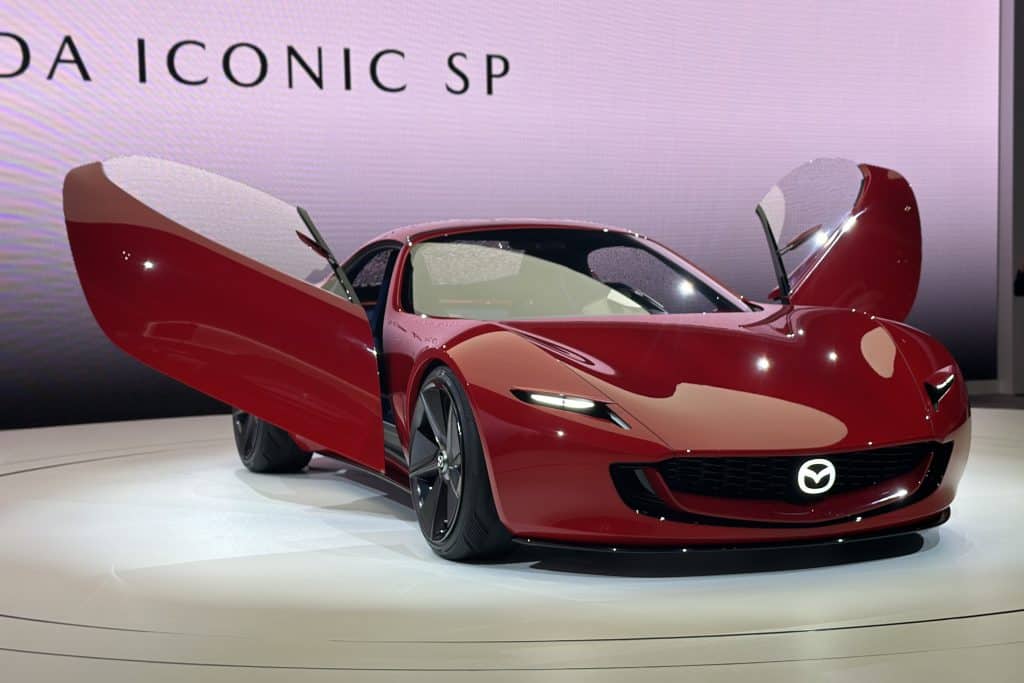
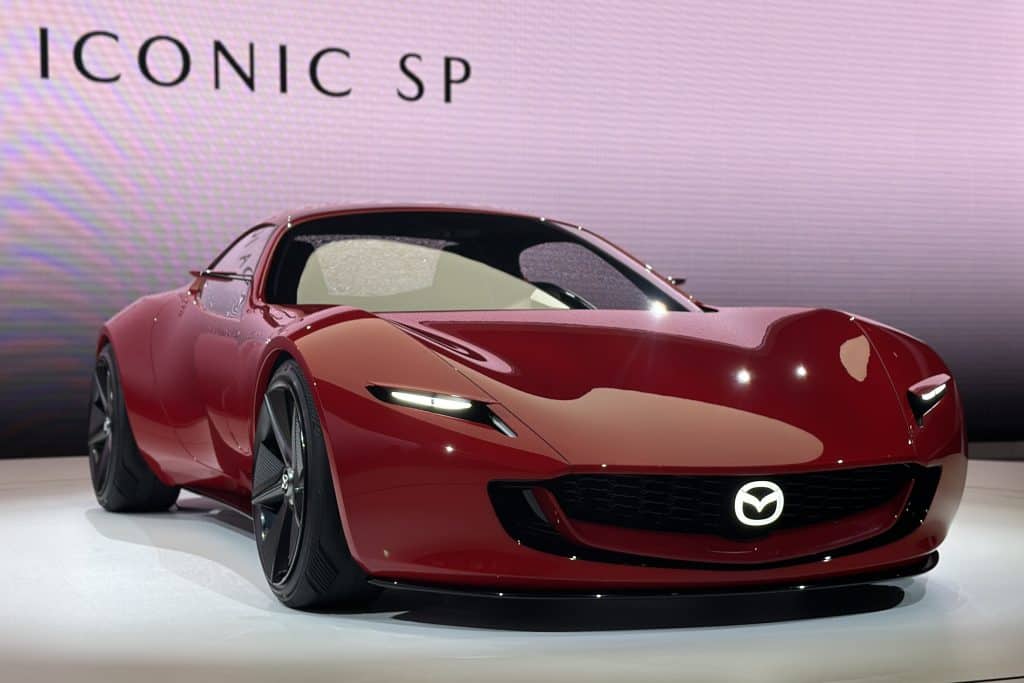
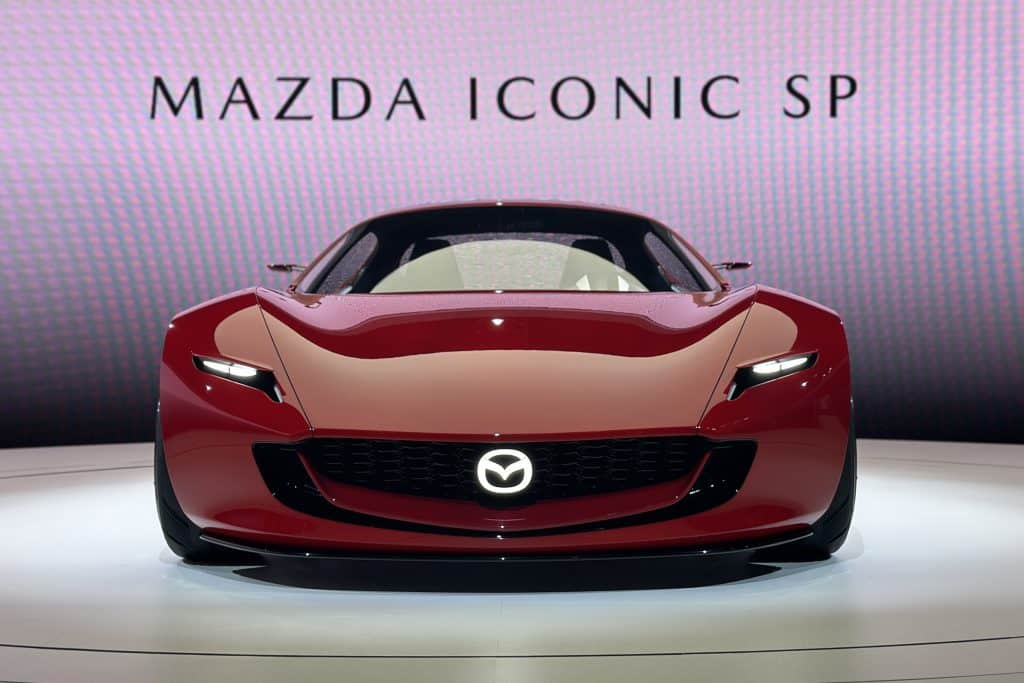
Mazda has revived the rotary-engine into a sports car, acting as a counterbalance to the barrage of EVs launched at the 2023 JMS.
The aura surrounding the Iconic SP was palpable, a charismatic nod to Mazda’s legacy and a thrilling glimpse into the future. Despite no explicit mention of the revered RX-7, the vehicle’s design and spirit mirrored the iconic rotary-powered sports car, a subtle tribute that fervent fans immediately recognized.
This concept wasn’t just a feast for the eyes; it housed an innovative heart, boasting Mazda’s rekindled commitment to the Wankel rotary engine. Patent clues hinted at a two-rotor rotary EV system, offering a blend of electric motors and the unique rotary engine, capable of burning alternative fuels like hydrogen, paving the way for a carbon-neutral driving experience.
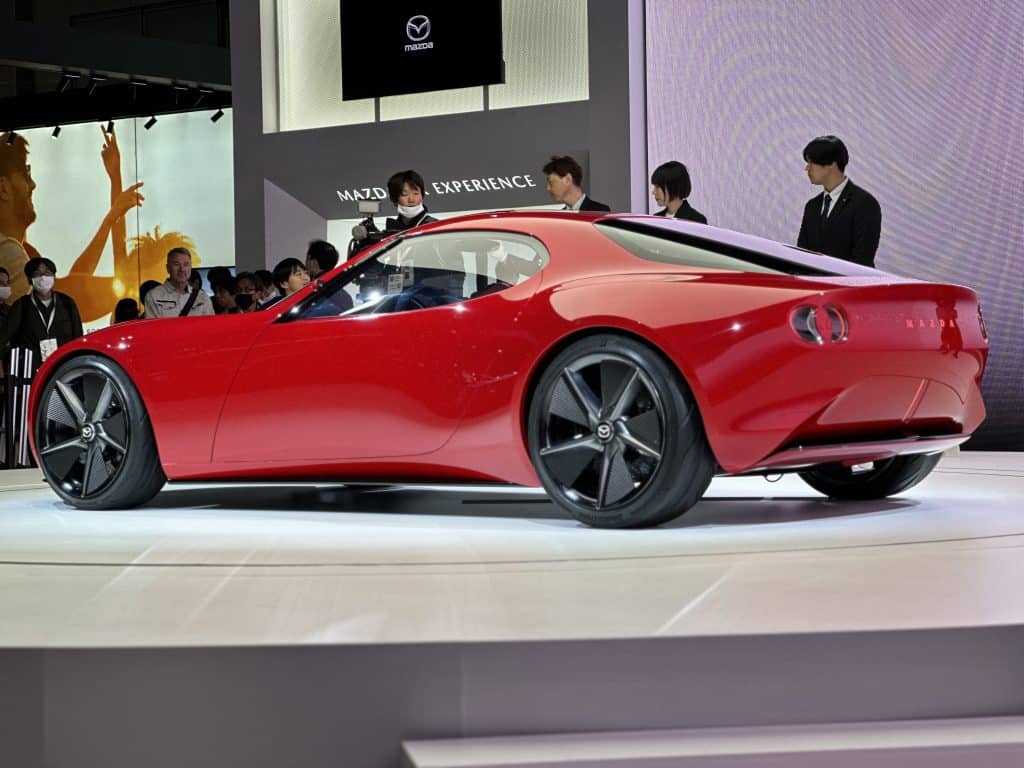
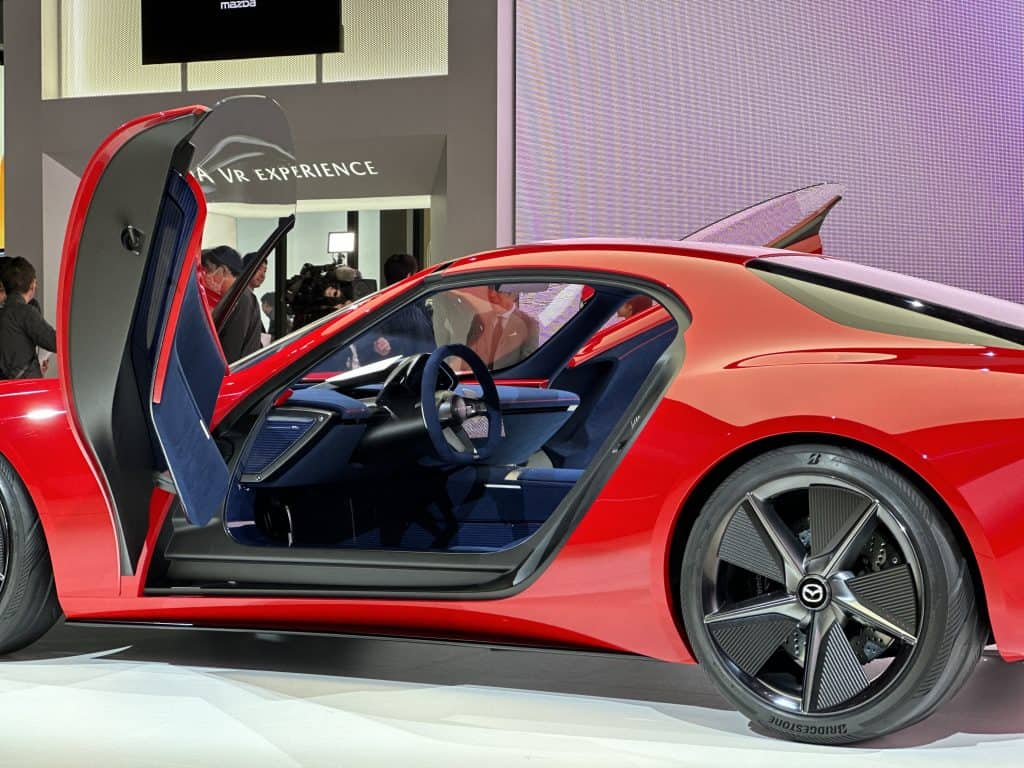
The car wasn’t merely a vision in red, but a performance powerhouse. With an impressive 365 horsepower, the Iconic SP surpassed its predecessor, the turbocharged RX-7, by over a hundred horses. Remarkably, Mazda kept its weight in check, maintaining a svelte figure just under 3,200 pounds. The power-to-weight ratio stood at an impressive 3.9, and a meticulously balanced 50:50 weight distribution promised an exhilarating driving experience.
The exterior design was a flawless homage to the RX-7. Clad in Mazda’s resplendent Viola Red, the compact sports car embraced the company’s philosophy of “enriching life-in-motion” with a deep appreciation for the color red. Despite being marginally shorter in length than the RX-7, the Iconic SP flaunted a longer wheelbase, ensuring a harmonious blend of iconic heritage and modern engineering.
The car’s silhouette was undeniably rotary-engine inspired, with a low-slung hood that paid homage to the power within. Echoes of the iconic RX-7 were present in the lifted doors, reminiscent of an era when pop-up headlights were the norm. The cabin, though minimalist, exuded a sense of purpose, with a compact infotainment screen and a straightforward gauge cluster, reflecting Mazda’s focus on the driving experience.
Mazda’s words echoed a commitment to deliver not just cars, but a pure embodiment of joy and an indispensable part of life. The concept car embodied the company’s dedication to the future of mobility and the unwavering pursuit of enriching life-in-motion for their clientele.
Enthusiasts eagerly anticipated the potential production of the Iconic SP, a car that seemed poised to reignite the fervor that the RX-8’s departure had left dormant. It was seen as the older sibling the iconic MX-5 Miata had long deserved, offering a compelling promise to reignite the passions of driving aficionados worldwide.
The reveal of the Iconic SP was more than just a concept unveiling; it was a rekindling of Mazda’s commitment to innovation, honoring its heritage while embracing the future. The fervor it ignited within the automotive community left enthusiasts eagerly anticipating the day this automotive dream might become a tangible reality on the roads.
As with everyone, we’ll keep an eye for further development of Mazda’s rotary-powered sports car. Hopefully, it will not remain a concept.

